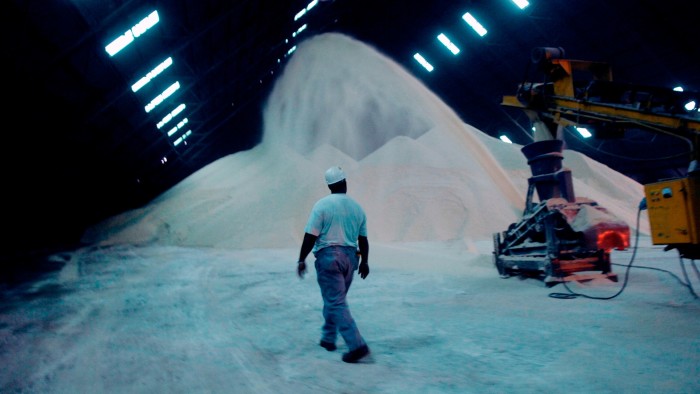Unlock the Editor’s Digest for free
Roula Khalaf, Editor of the FT, selects her favourite stories in this weekly newsletter.
The health risks of too much sugar have been made clear, but the billion-dollar global market to supply it is thriving. Sales of sweet treats remain strong, and waistlines keep expanding. Could weight-loss drugs now succeed where governments, scientists and doctors have failed: crushing demand for sugar?
So-called glucagon-like peptide-1 receptor agonists (GLP-1s) contained in such drugs as Wegovy, Mounjaro and Ozempic curb users’ appetites and are being hailed as game changers for tackling obesity and potentially a range of other conditions, from diabetes to addiction. They could also lead to an upheaval in sugar markets.
Fears that Americans on GLP-1s will stop buying treats have already spooked businesses and investors. Mondelez and PepsiCo stocks took a hit after Walmart chief executive John Furner reported that customers on these drugs were buying fewer groceries. Hershey has also acknowledged experiencing a “mild impact” on sales, attributed to the growing use of GLP-1 medications.
Sugar traders, for now, are brushing off concerns about weight-loss drugs’ potential to dent demand. Perhaps they’re battle-hardened — decades of sugar-is-bad campaigns have not made a dent in global consumption, which has quadrupled in the past 60 years, according to Professor Paul Behrens of the British Academy. Sweet treats still fly off the shelves in most markets, and until recently sugar prices have been riding high on weather woes and rising production costs.
There are other reasons for traders’ nonchalance. So far, Ozempic and other drugs are pricey and only available to a small segment of wealthy consumers in developed countries. Even if these appetite-suppressing drugs do start reducing demand, the thinking goes, it’ll be a slow burn, giving markets and sugar producers plenty of time to adjust.
But could this confidence be misplaced? Weight-loss drugs do work in curbing appetites. That makes them far more likely to reshape sugar consumption — and with it, the sugar market.
Stephen Geldart of London-based sugar merchant Czarnikow believes the GLP-1 drugs are already on track to disrupt demand, starting with wealthy nations. “I think we’re just in the early stages of it, partly because these drugs are still quite expensive,” he told me. “So they’re not widespread — yet.”
That “yet” looms large. In the UK, for example, the government plans to roll out Mounjaro on the NHS. Prices are likely to drop elsewhere too, especially as pharmaceutical companies race to sell compounded versions of drugs, circumventing patents.
If prices fall and access broadens, the ripple effects could reach middle-income and even developing markets. The obesity epidemic and slew of health conditions that come with it are not limited to rich western nations. In India, the world’s biggest sugar consumer, rates of diabetes and obesity are soaring. Indians consume a staggering 29mn tonnes of sugar annually — 15 per cent of global demand. Even a modest uptake of GLP-1s there could shake the market in ways that traders might find hard to ignore.
Geldart highlights another phenomenon that should give sugar market participants pause: heavy buyers of products with high sugar levels such as ice cream, cookies and chocolate account for a disproportionate amount of sales. If such users cut back, there could be a big impact.
Tracking sugar consumption is notoriously tricky, though. There’s a real risk, therefore, that these trends could develop under the radar before the industry wakes up to what’s happening.
However, a quiet drop in demand could be magnified by rising supply. High prices over the past year have spurred a wave of sugarcane investments, particularly in Brazil. If production ramps up while consumption falters, the market could face a supply glut that drags prices lower and forces a painful adjustment. Already, prices have fallen back recently on reduced production worries. Raw sugar futures in New York have dropped from their November 2023 peak of 28 cents a pound, plunging this month to less than 19.50 cents.
Sugar’s adaptability — it can be repurposed into ethanol for fuel or bioplastics — might provide a cushion, especially as demand for low-carbon fuels and renewable materials grows. Yet this transition won’t happen overnight.
Until now, the sugar market has not attracted much speculative interest. But how long before short sellers seize an opportunity to get a slice of the Ozempic pie?
Read the full article here

